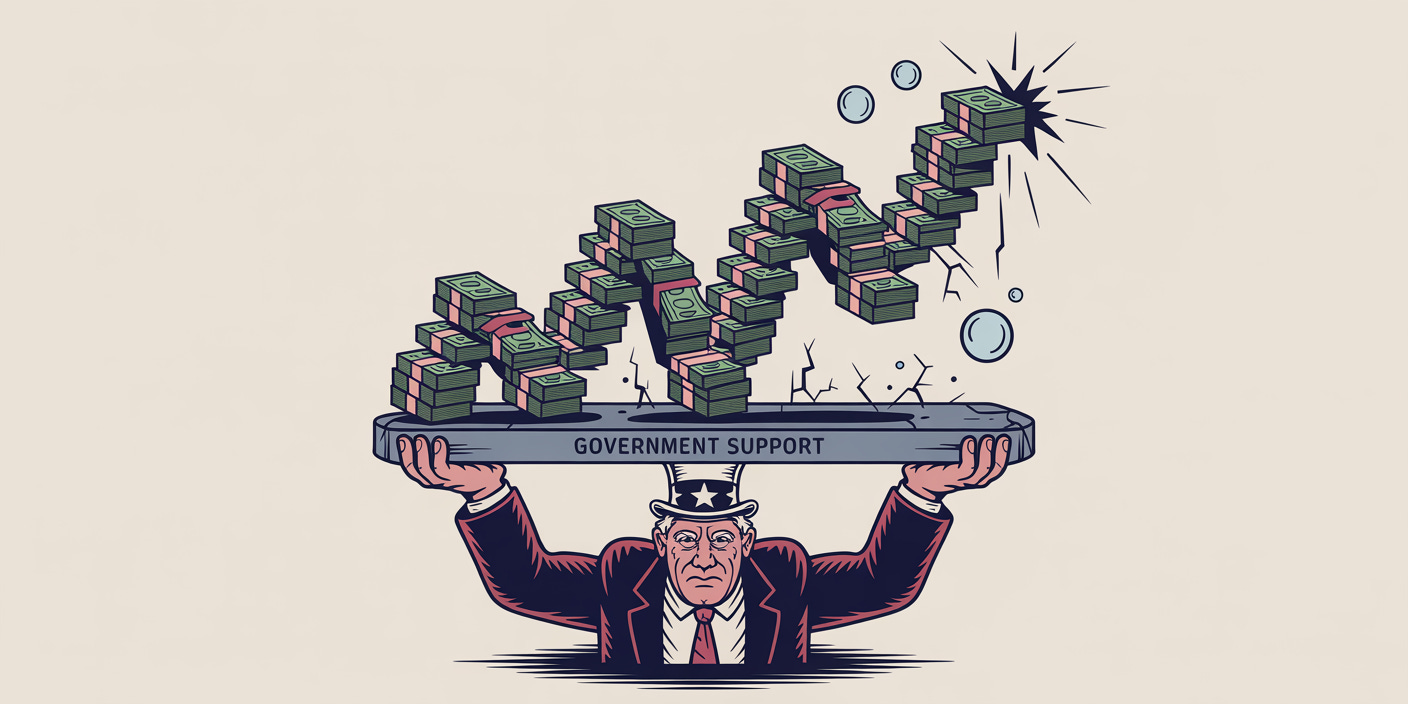Why Prices Will Keep Going Higher Into 2026 (Even If You Think It’s a Bubble)
Many investors worry that a correction is imminent. Yet, despite these concerns, structural forces could propel prices even higher. This article explores two key reasons: the U.S. administration’s aggressive push to grow and inflate its way out of mounting debt, and the performance-chasing behavior of underperforming hedge funds.
1. The Administration’s Strategy: Inflate the Problem Away
Whether or not anyone agrees with the approach, this administration has made its strategy clear:
Grow or inflate the economy out of the debt burden.
Inflation doesn’t make the debt go away, but it makes the debt smaller relative to the GDP.
This improves the debt-to-GDP ratio, a key metric for fiscal health. For instance, if debt stays flat at $37 trillion but inflation drives nominal GDP up by 3-4% annually, the ratio drops, making the debt appear more manageable.
Inflation acts like a slow erosion of the real value of prior obligations. The government collects taxes in inflated dollars, while repaying debt issued in old dollars.
So if an administration believes: “We can outgrow or inflate our way through the debt problem,” then the policies will naturally lean toward:
supporting equity markets
maintaining liquidity
promoting credit creation
stimulating demand
In other words: risk assets are intentionally supported because they are seen as part of the solution.
This alone keeps a strong bid under markets. The political incentive is to keep financial conditions loose. A significant market drop would tighten credit, dent sentiment, and weaken the very growth narrative they rely on.
So when people ask, “How can markets keep going up with all this debt?”
The answer is: that’s exactly why the administration wants them to.
2. Hedge Funds Are Underperforming — And Forced Buyers on Every Dip
The second major driver is positioning, not policy.
The majority of hedge funds are lagging this year by believing we are in a bubble. Many were underexposed or hedged too aggressively. Many funds now face a year-end dilemma:
They must buy stocks — even if they don’t want to.
Underperformance creates forced behavior:
When equities dip, funds buy to “catch up.”
When equities rally, they panic-buy to avoid falling further behind.
The result is a continuous, mechanical bid under the market.
This is a classic late-year dynamic:
Underperformers become price-insensitive buyers.
Combine dozens of multibillion-dollar funds all chasing performance simultaneously, and you get a powerful feedback loop:
Dip → funds buy
Rally → funds chase
This creates persistent upward pressure regardless of macro concerns.
When you hear managers say, “The market feels like it has no sellers,”
this is why.
The Point: Markets Don’t Need to Be Healthy to Go Higher
Markets rise for many reasons:
monetary policy
fiscal support
liquidity injections
structural flows
buybacks
pension rebalancing
FOMO from underperforming funds
Valuation is just one factor — and often not the dominant one during late-cycle rallies.
This doesn’t mean risk is gone.
It means the forces pushing the market higher are stronger, more systematic, and more politically aligned than many realize.


